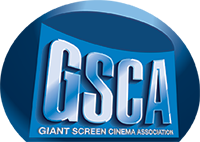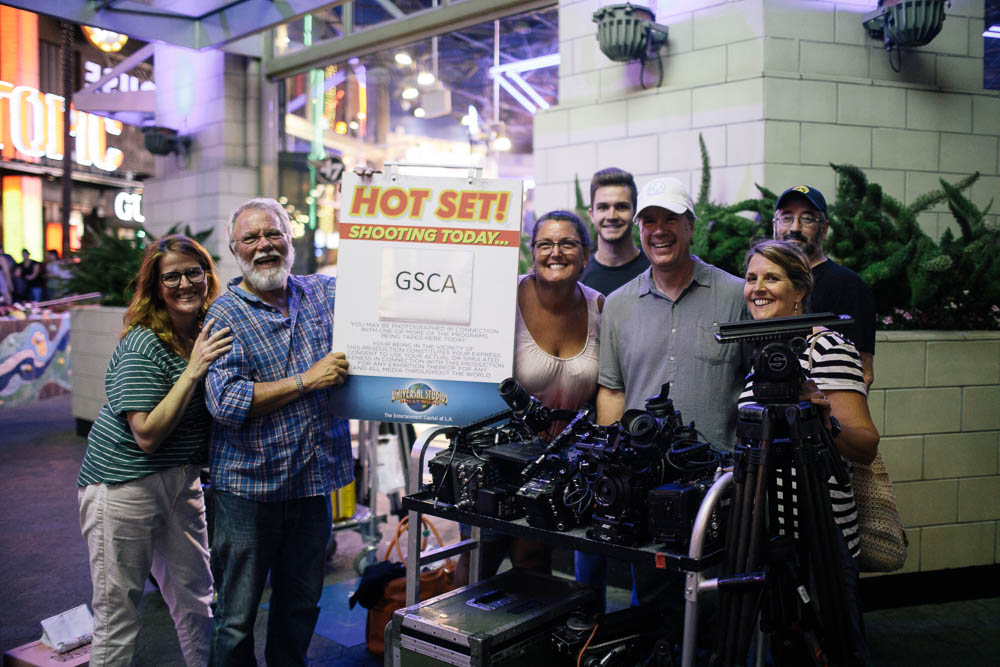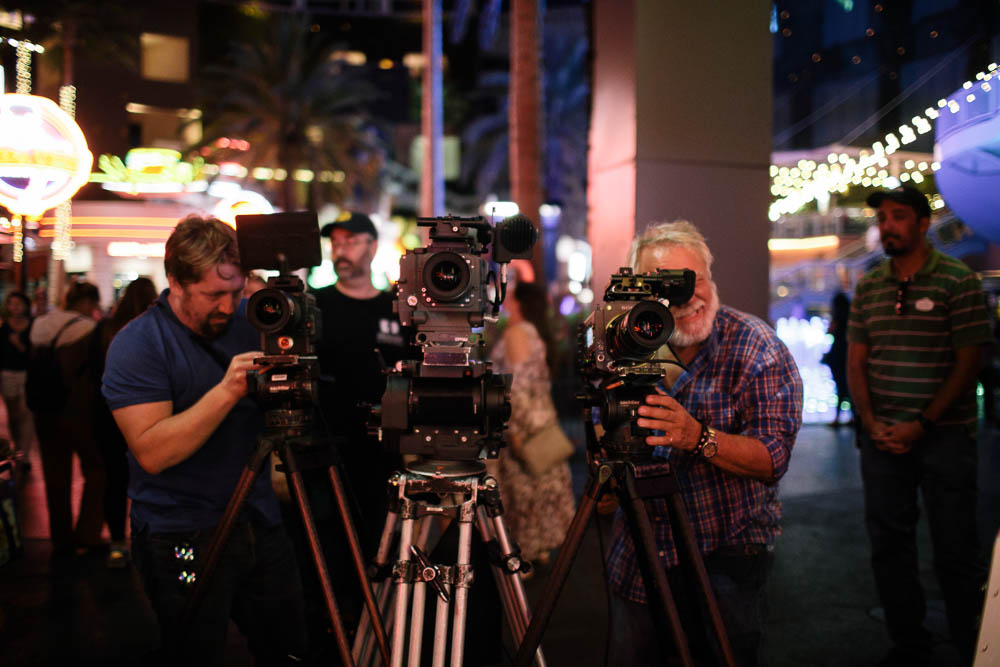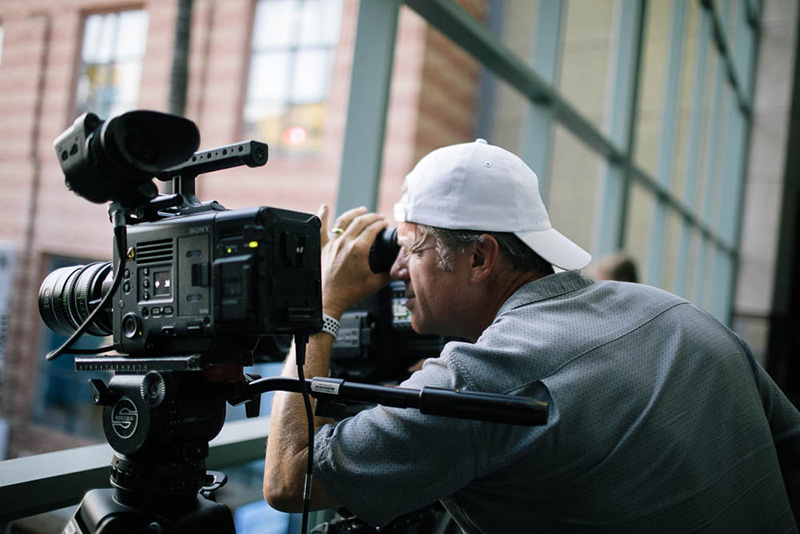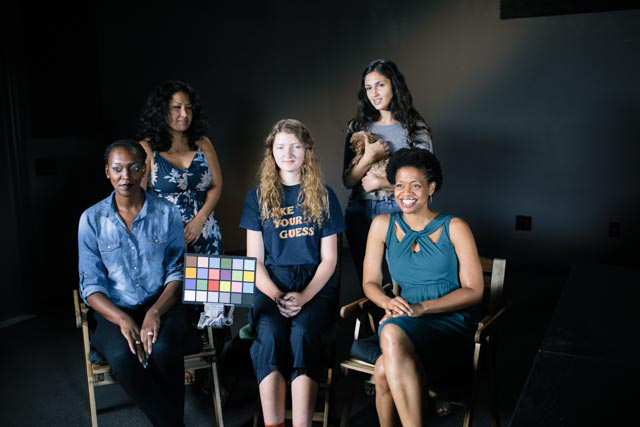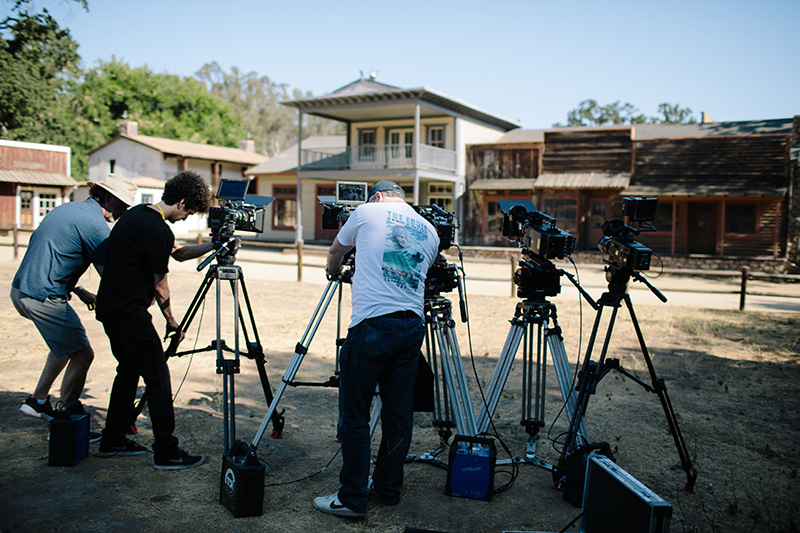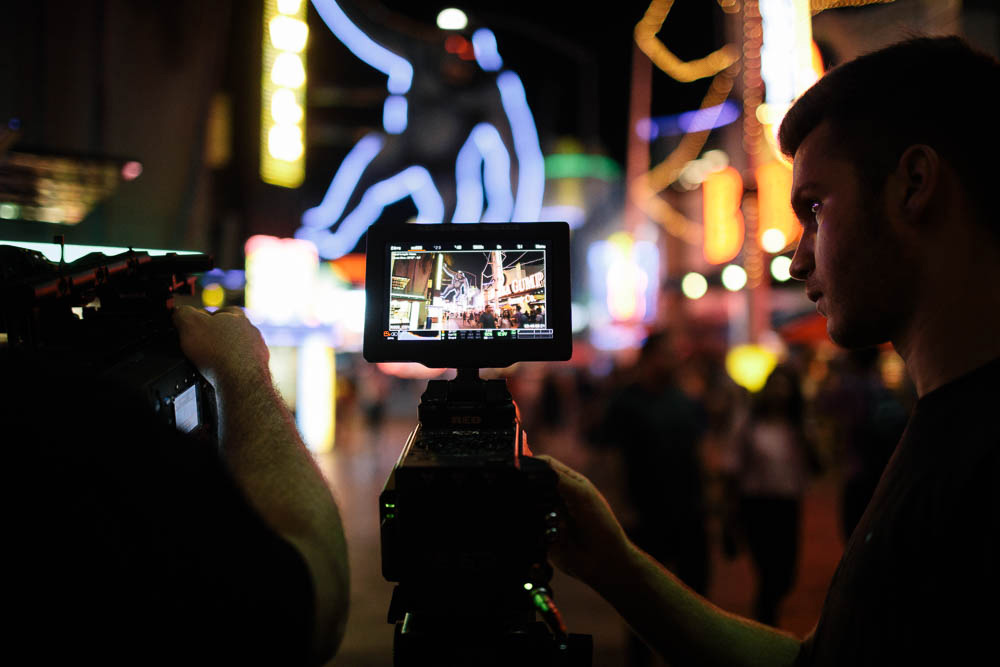The Background
A keystone of the Giant Screen Cinema Association’s (GSCA) strategic plan is to build a pipeline of quality educational and entertaining content. To fulfill that plan, GSCA, through its Technical Committee, has conducted a number of tests in the past four years to help filmmakers capture the best images possible for the giant screen. It started in 2014 with two iterations of Bring Back Our Wide Shots (BBOWS), with the main goal of testing whether images from the latest 4K digital cameras could meet what could be attained on 1570 film. Cameras used for this test were the Sony F65, Canon C500, Red Dragon, RED Epic, Arri Alexa XT, and IMAX Film.
When the results were presented at the 2015 GSCA Los Angeles Film Expo and Filmmaker Symposium and then again at the 2015 GSCA Conference technical session in San Francisco, the majority opinion was that capturing in digital was quite close to, and nearly as good as, images captured on film.
Next came Saving Our Aspect Ratio (SOAR) in 2017, which tested how to best shoot 4:3 aspect ratio and preserve that ratio for the giant screen. For this test, only digital cameras were used: the Alexa 65 and Red 8k Super. The results of this test were presented at the 2017 Conference in Chicago. Many in the industry feel the 4:3 aspect ratio is what sets the giant screen experience apart from other cinema formats and that with 16:9 or 1.85 the vertical impact of scenes is lost. Additionally, maintaining this aspect ratio is especially important to domes so that the image covers a larger percentage of the screen and doesn’t appear as a rectangular window inset into a dome surface.

The High Resolution Digital Camera Comparison (HRDCC) Shoot
The latest test is the High Resolution Digital Camera Comparison (HRDCC), which GSCA conducted in July, 2018, to demonstrate the strengths of five higher-than-6K-resolution cameras: The Arri Alexa 65, Canon 6700 Full Frame, Panavision DXL2, Red Weapon Monstro Vista Vision, and Sony Venice. The goal of this test was to show filmmakers how each performs in various shooting situations. Each camera may excel in different situations, and filmmakers will be able to decide for themselves which to use in various shots. This test included more cinematic shots than the previous tests, with setups that included dynamic range, resolution charts, beauty shots with moving detail, various lighting (sunlight, magic hour, nighttime, indoors), fine detail performance in wide shots, different flesh tones, and aspect ratios for cropped and with frame extensions.
We did everything we could to challenge the full range of all the cameras. Los Angeles shooting locations for the HRDCC included the Paramount Ranch, featuring bright sunlight with static and moving details, shots of trees and tiny leaves rustling in the wind, high contrast and shadows on the buildings, and bright reflections. A downtown LA shoot included a rooftop terrace at magic hour with all cameras rolling simultaneously, a nighttime cityscape to show low light and high detail, and interior high-contrast shots. An early morning shoot at the Walt Disney Concert Hall captured the sunrise and architectural details. Water features and high light activity against a dark background to show dynamic motion and contrast were shot at Grand Park. The shoot at CityWalk (the location for the GSCA 2019 Film Expo and Filmmaker Symposium) included neon lights, dynamic motion and contrast, magic hour with all cameras rolling simultaneously, and night shots with low light, neon, and detailed movement. All shots also included tilt-up capture and set extension so we can do aspect ratio experiments. In addition to the location shoots, we also shot indoors to capture resolution charts and sharpness, actors for skin tone tests, and general interior shots with lighting.
One challenge of any digital system is fine detail. The high frequency, fine detail of digital capture makes the viewer believe they are watching something live rather than giving it the traditional motion picture effect. And while 4K laser projection looks really good, if images are shot in 8K and projected in 4K, they’ll look even better. The sides of the image can then be cropped to bring it to a 4:3 aspect ratio, allowing it to maintain 4K quality and be projected in classic giant screen theaters. Depending on the camera, the image may even be 6K horizontally.
The team shot much more than will be included in the technical session this fall, so this footage will be useful for a number of future demos. The next steps for the HRDCC are to crop all the 1.9 images to 4:3 aspect ratio to produce 6K x 4K resolution; however, the crew captured shot extensions for nearly every scene by tilting the cameras up and shooting above the original composition. These can be composited in at a later time to produce 8K x 6K imagery.
The Results
The test results were shown at the Tennessee Aquarium IMAX Theater during the technical session on Saturday, September 22, 2018, and during the digital dome presentation by Evans & Sutherland and Christie at the McWane Science Center on Dome Day on September 24, 2018.
In March 2019, GSCA presented a second phase of this test as a part of the “Technology and Art Tools for Giant Screen Filmmaking” session during the GSCA Filmmaker Symposium. In this case, five shots from the various cameras have been selected and finished. The shots have undergone further color correction, noise reduction, highlight reduction, and converted to the 4×3 aspect ratio using a variety of techniques, all maintaining the full camera resolution.
High Resolution Digital Camera Comparison Video
The High Resolution Digital Camera Comparison material is available to GSCA members. GSCA retains the right to approve use of the content. GSCA requests any results or testing completed be shared with the GSCA. Requests should be submitted to Tammy Barrett at tammy@giantscreencinema.com or 1-703-855-3699.
The HRDCC Production Team
- Tammy Barrett, Producer, GSCA Executive
- DirectorMichael Daut, Mousetrappe, Director, GSCA Technical Committee Co-Chair
- James Neihouse, ASC, Director of Cinematography
- Jay Holben, Camera OperatorEli DiFiore, Camera Operator
- Jason Pundt, Camera Operator
- Andrew Oran, FotoKem, Digital Intermediate & Digital Cinema Mastering, Post
- Leena Gundapaneni, FotoKem, Post Production Producer, Model
- Tim Smith, Canon C700 Full Frame
- Dana Ross, Arri Alexa 65
- Peter Crithary, Sony Venice
- Kim Snyder, Panavision DXL2
- Naida Albright, Red Weapon Monstro Vista Vision
- Seth Emmons, Lecia Thalia Lenses
- Rufus Burnham, The Camera Division, Equipment
- Christian Fry, CVF Productions, 8KDCC Task Force, Volunteer
- Rick Gordon, RPG Productions, 8KDCC Task Force, Volunteer
- Pawel Achtel, 8KDCCTask Force
- Jonathan Bird, 8KDCC Task Force
- Nate Cohen, SK Films, 8KDCC Task Force
- Phil Streather, PLF Productions, 8KDCC Task Force
- Maggie Storm, Mousetrappe, Still photographer, Volunteer
- Kathy Daut, Volunteer
- Shilie Ahadi, Model
- Paola Cervantes, Model
- Joyce Hu, Model
- Ava Oran, Model
- Molly Oran, Model
- Robin Ricks, Model
- Chewy, Dog Model
High Resolution Digital Camera Comparison Details
The HR Digital Camera Comparison material is available to GSCA members. GSCA retains the right to approve use of the content. GSCA requests any results or testing completed be shared with the GSCA. Requests should be submitted to Tammy Barrett at tammy@giantscreencinema.com or 1-703-855-3699.
Goal of HRDCC
The GSCA conducted a high resolution digital camera comparison (HRDCC) to show the strengths of five higher than 6k resolution cameras to allow filmmakers to see how each performs in various shooting situations.
Cameras tested
- Arri Alexa 65
- Canon C700 Full Frame
- Panavision DXL2
- Red Weapon Monstro Vista Vision
- Sony Venice
Camera Technical Setups
- Highest Resolution
- Non-Compressed or Lowest Possible Compression
- RAW / LOG
- ACES Color Space
- 24fps
Lenses
Matched Thalia Leica lenses were used for all tests.
Shooting situations captured
- Dynamic range
- Resolution charts
- Beauty shots with moving detail
- Various shooting conditions: sunlight, magic hour, nighttime, indoors
- Fine detail performance in wide shots
- Flesh tones
- Aspect ratio: shoot for cropped and with frame extensions
Locations shot (not all footage will be used in the fall 2018 edit of HRDCC)
- Paramount Ranch: 2903 Cornell Rd, Agoura Hills, CA 91301
- Old Western Building with tourists walking through (WS)
- Bright sunlight with static and moving detail in shots + flesh tones
- Shot of trees with leaves rustling in wind
- Shot under awning looking onto Western Street
- Downtown Los Angeles Rooftop, 215 W. 6th Street, Los Angeles, CA 90014
- Capture magic hour shot with all cameras rolling simultaneously
- Night cityscape – low light and high detail
- Indoor, high contrast with interior low light and outdoor light streaming in
- Walt Disney Concert Hall, 111 S. Grand Ave., Los Angeles, CA 90012
- Sunrise shot
- Detailed architecture
- The Broad Art Museum, 221 S. Grand Ave, Los Angeles, CA 90012
- Detailed architecture
- Grand Park, 200 N. Grand Ave, Los Angeles, CA 90012
- Water fountain: Dynamic motion and contrast (shooting into sun)
- Universal CityWAlk, 100 Universal City Plaza, Universal City, CA 91608
- WS and MS of complex looking down into detailed marquees with lots of guests moving through scene: Beauty shot with moving details – dynamic range
- Water fountains: Dynamic motion and contrast
- Magic hour shot with all cameras rolling simultaneously
- Night shot with Low light, contrast, neon, detailed movement
- Mousetrappe, 111 W Verdugo Ave, Burbank, CA 91502
- Resolution charts and sharpness
- Actors on camera for skin tone tests
- General interior shot with indoor lighting
